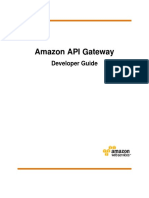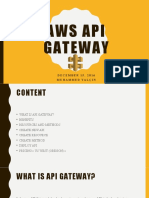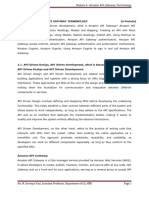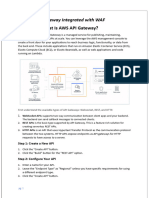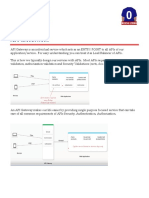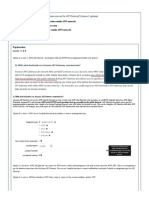0% found this document useful (0 votes)
25 views2 pagesNew API Gateway SAP
AWS API Gateway is a fully managed service that enables developers to create, publish, maintain, monitor, and secure APIs at scale. It supports various types of APIs, including REST, HTTP, and WebSocket, and integrates with AWS services like Lambda and DynamoDB. Key features include security options, monitoring through CloudWatch, and advantages such as scalability and ease of deployment.
Uploaded by
mayur2460Copyright
© © All Rights Reserved
We take content rights seriously. If you suspect this is your content, claim it here.
Available Formats
Download as DOCX, PDF, TXT or read online on Scribd
0% found this document useful (0 votes)
25 views2 pagesNew API Gateway SAP
AWS API Gateway is a fully managed service that enables developers to create, publish, maintain, monitor, and secure APIs at scale. It supports various types of APIs, including REST, HTTP, and WebSocket, and integrates with AWS services like Lambda and DynamoDB. Key features include security options, monitoring through CloudWatch, and advantages such as scalability and ease of deployment.
Uploaded by
mayur2460Copyright
© © All Rights Reserved
We take content rights seriously. If you suspect this is your content, claim it here.
Available Formats
Download as DOCX, PDF, TXT or read online on Scribd
/ 2









